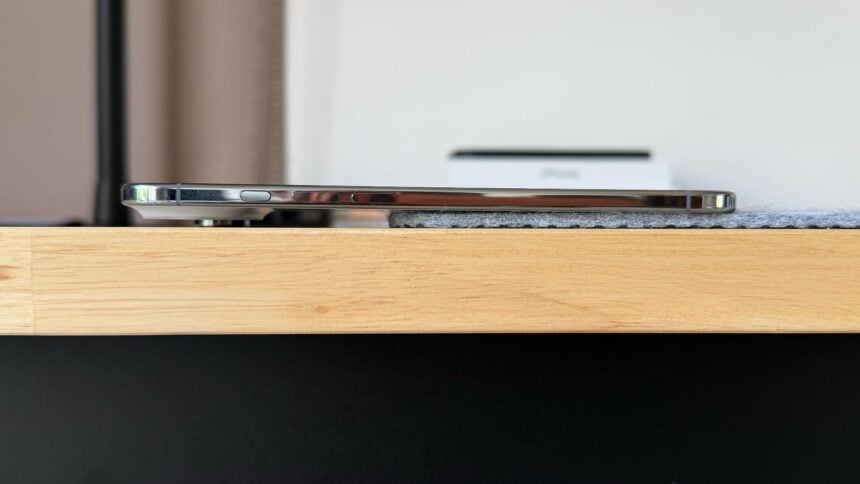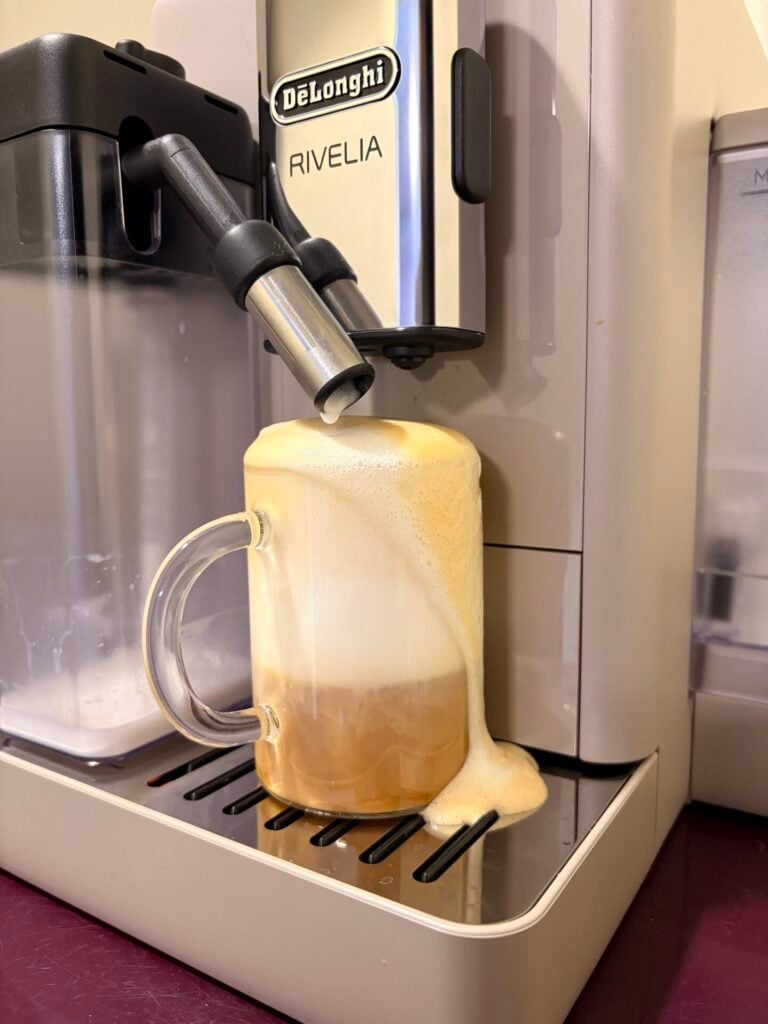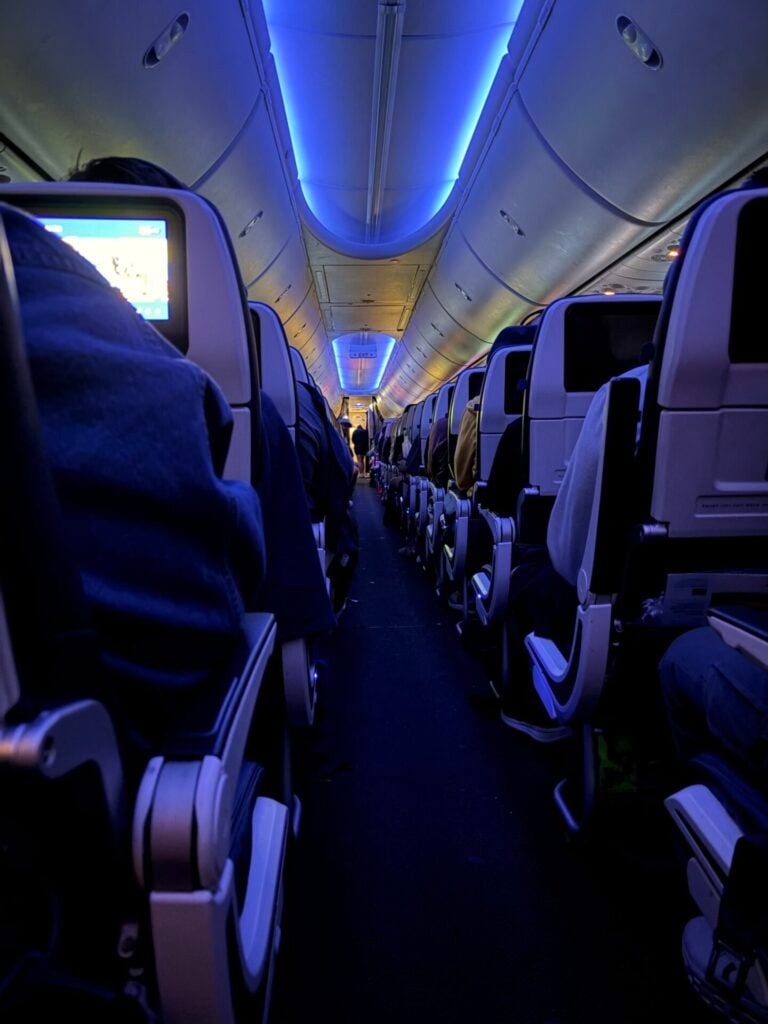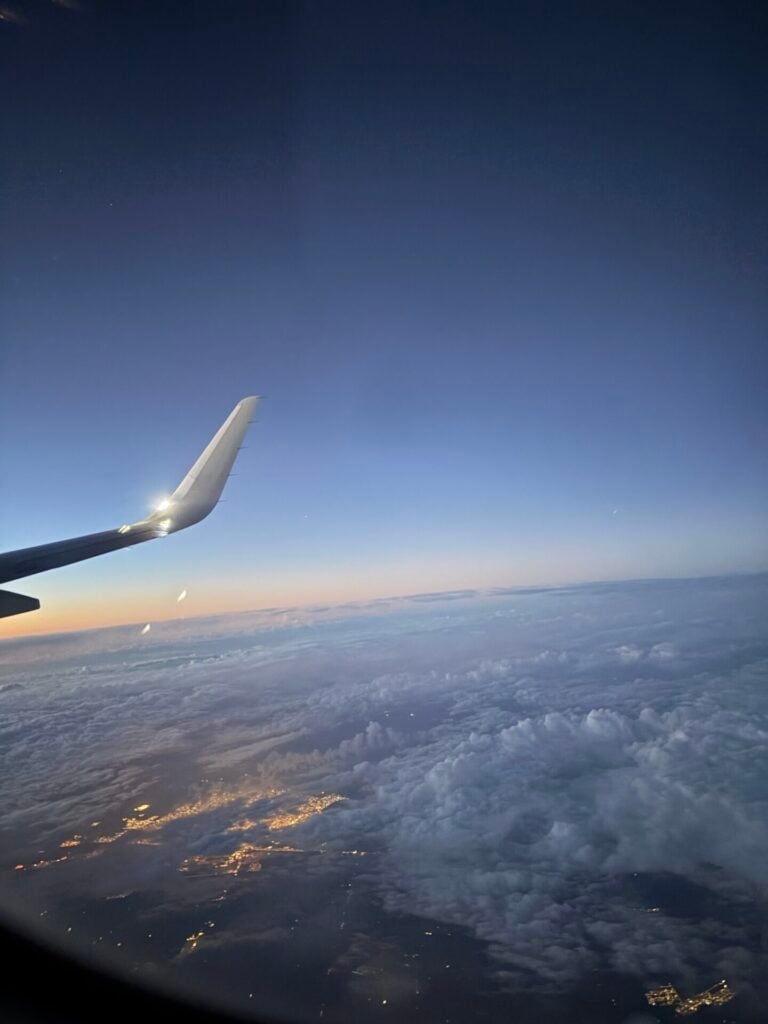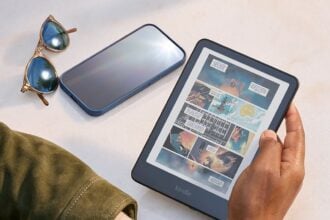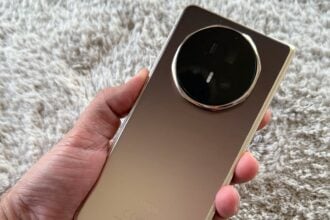With the iPhone Air, Apple has done what it does best- make every other phone feel like a relic from the past. I’ve been using it for over two weeks and am convinced that it is the future of all phones.
Weighing in at just 165 grams and thinner than any iPhone before it, the iPhone Air redefines what a premium phone feels like in your hand. It’s designed for users who value portability without compromising on performance or style. With a titanium frame, an Apple A19 Pro chip, and a stunning 120Hz display, the iPhone Air feels like a sneak peek into the future of all smartphones.
It sits alongside the base iPhone 17 and the iPhone 17 Pro line, and between these phones, Apple has created an almost perfect line-up this year. The iPhone 17 Pro caters towards users who want the most performance out of their phones, while the regular iPhone 17 is the most affordable iPhone this year. This allows Apple to position the iPhone Air as the premium, luxurious model that trades off certain features for its exquisite design.
The iPhone Air isn’t just a lighter iPhone—it’s a statement. For users who want premium design, reliable performance, and just the right amount of compromise (like a single camera and no SIM tray), this device hits a very sweet spot.
- Ultra-light and slim titanium design
- Beautiful 120Hz OLED display
- A19 Pro chip ensures smooth performance
- No ultra-wide or telephoto camera
- No SIM tray may inconvenience some users
- Not ideal for heavy content creators
iPhone Air UAE Pricing and Availability
The iPhone Air starts at AED 4,299 in the UAE for the 256GB model, going up to AED 5,149 for the 512GB model and AED 5,999 for the 1TB model. Colour options are Black and White. There is a slightly warmer white variant, which Apple calls Light Gold, and a somewhat cooler white variant labelled as Sky Blue.
The iPhone Air is available across Apple UAE, Sharaf DG, Jumbo Electronics, Virgin Megastore, and Amazon.ae. Local warranty and eSIM support are fully compatible with Etisalat, du, and Virgin Mobile.
Design: Elegance in the Palm of Your Hand
The iPhone Air is easily the most beautiful iPhone Apple has ever made. It’s featherlight—almost shockingly so—and thanks to its titanium frame that blends seamlessly between the two glass sides, it feels sturdy and premium in the hand. On more than a few occasions, I thought that I had left my phone behind, even though it was sitting inside my jeans front pocket.
Even though the iPhone Air is the thinnest phone Apple has made, it’s also its strongest —so strong that it’s unbreakable by human hands. You can bend the phone if you try really hard, but the titanium frame returns it to its original shape. Apple has also used Ceramic Shield 2, which is supposedly 3 times more scratch-resistant. I’ve been using the iPhone Air without any case or cover for over two weeks now, and it has held up well. Also, it would be a sin to hide the iPhone Air inside a cover.
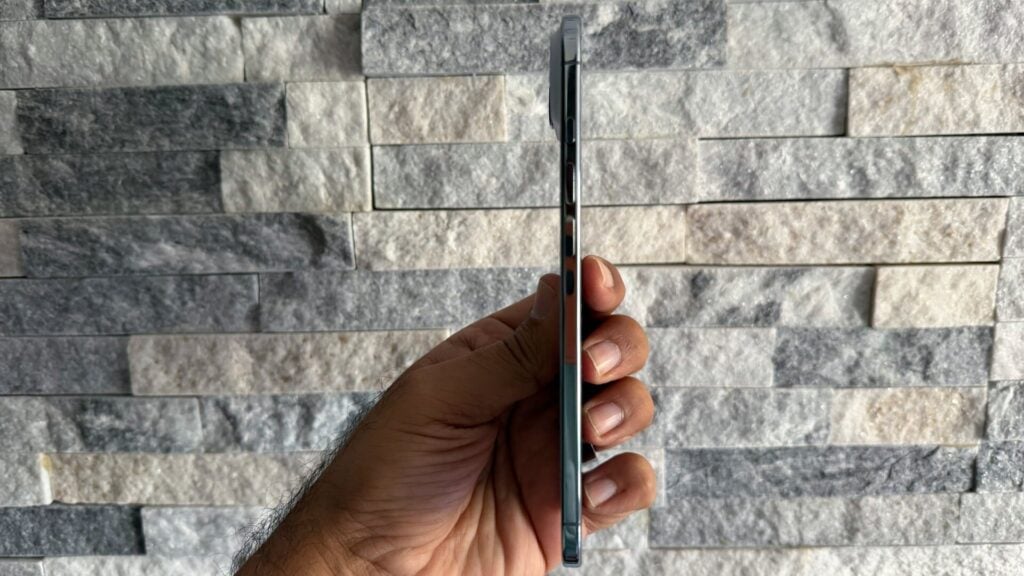
Apple’s design language has always leaned toward minimalism, but here it reaches new heights. Gone is the SIM tray (at least in UAE models)—Apple is now all-in on eSIM, which may be inconvenient for someone like me who reviews new phones every month. But I’m not your average user and for most people this would be an excercise every 2-3 years.
The iPhone Air features a raised plateau on its back that neatly contains the core components and camera system, freeing up the rest of the body for a larger battery — a simple yet brilliant bit of engineering I’m amazed no one tried before. The familiar clicky action button sits comfortably beside the volume and power controls, while a dedicated camera button on the right edge gives you instant access to the camera for quick shots.
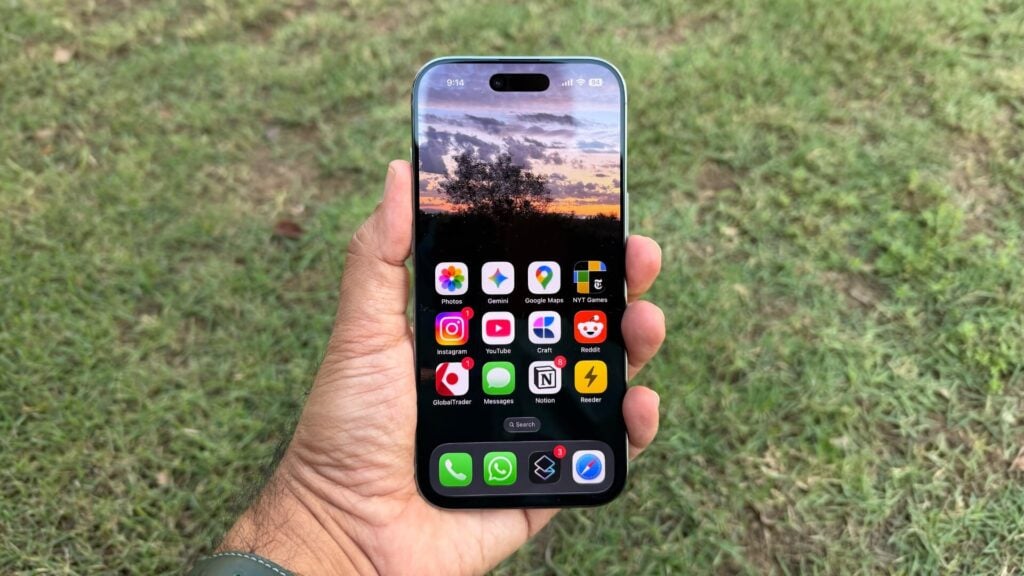
Display and Performance: Smooth, Sharp, and Fast
With its 6.5-inch Super Retina XDR OLED panel and ProMotion 120Hz refresh rate, the iPhone Air delivers an excellent viewing experiences. It’s smooth, vibrant, and a joy to scroll, stream, or swipe through your apps. Whether you’re flipping through Instagram Reels, catching up on Netflix, or tackling email, everything feels fast and fluid.
At the heart of the iPhone Air is Apple’s A19 Pro chip — the same powerhouse used in the iPhone 17 Pro Max, albeit with one less GPU core. It might sound like overkill, but that’s precisely the point: Apple wants the iPhone Air to stay fast and future-ready for years. It also lends weight to rumours that Apple may slow its release cycle, keeping the standard iPhones on an annual schedule while models like the iPhone Air skip a yearly refresh.
The A19 Pro handles everything effortlessly — it’s fast, fluid, and never seems to break a sweat. My daily use leans toward appls like Superhuman for emails, WhatsApp for messaging, ChatGPT, photo editing using the Photos app, and endless scrolling on news and RSS apps like Reeder. I’m not much of a gamer; the only gaming app on my phone is New York Times, on which I play Soduko, Wordle and Crossword.
The iPhone Air stays impressively cool, which is surprising given its slim frame and limited thermal headroom. It only warmed up during the initial setup or while recording longer videos and updating 30+ apps. Then again, I’m not a heavy gamer — and that’s fine, because the iPhone Air clearly isn’t built for people who spend hours gaming on their phones.
One of the concerns I had with the Air was the absence of stereo speakers; however, the single speaker on the earpiece is loud enough for browsing videos on social platforms, making video calls, or listening to podcasts when the phone is nearby. The AirPods or any other bluetooth headphones can handle any heavy audio lifting above that.
Also new this year across all iPhone models is Apple’s custom N1 wireless networking chip, which supports Wi-Fi 7, Bluetooth 6, and Thread. Additionally, the iPhone Air comes with the updated C1X 5G modem- which we first saw on the iPhone 16e. All I can say is that I face no issues with Wi-Fi or Bluetooth connectivity, not just with Apple devices, but also when setting up various smart home devices. And about the only time I faced an issue with cellular connectivity was driving on the road to the very remote Hana in Hawaii. Other than that, I had no problems using dual SIM connectivity across Dubai, Muscat, Maui, Los Angeles and Phoenix.
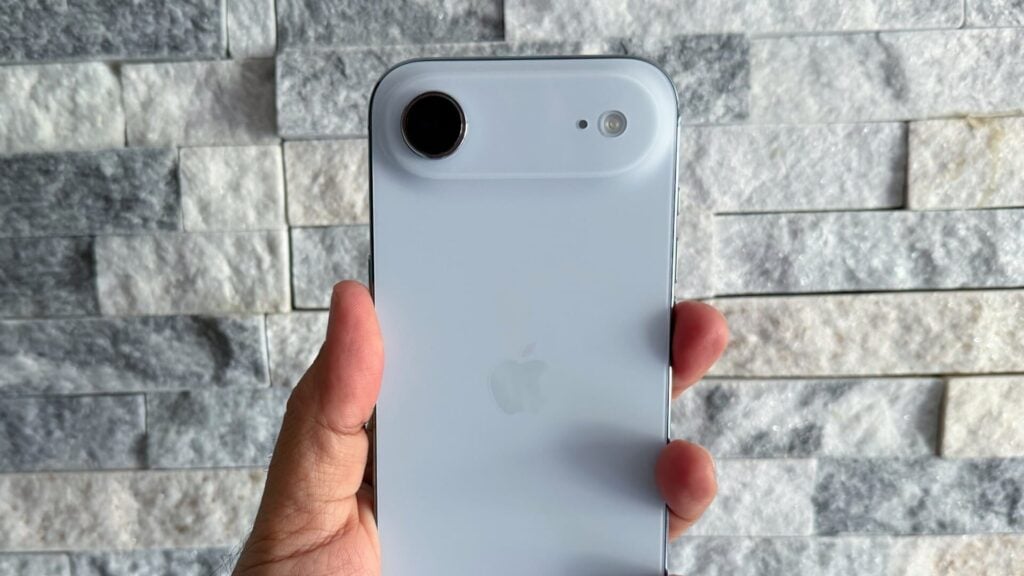
Camera: One Lens, Surprisingly Versatile
Unlike the iPhone 17 Pro or even the standard iPhone 17, the iPhone Air makes do with a single rear lens — a clear step down from my previous iPhone 16 Pro. Still, its 48MP Fusion Camera System delivers impressive results in daylight, indoor, and low-light conditions, backed by Apple’s Smart HDR and computational photography magic. The trade-off is versatility: without ultra-wide or telephoto options, zoom and macro shots are limited. There were definitely moments when I missed having that extra lens.
But I can understand the limits of technology, and given the form factor of the iPhone Air, this is a trade-off I can currently accept. The primary camera is the one I use 90% of the time, and the results from that are consistently sharp and vibrant. Videos also turn out great, but that’s no surprise – the iPhone has been the best video camera on a phone for several years now.
Coming to the front, you get Apple’s new 18MP CenterStage camera, featuring a sensor that can easily switch between portrait and landscape photos without rotating the phone. This feature, which is also present on the regular iPhone 17 and the Pro models, is pure Apple magic but takes some getting used to. I had to constantly remind myself that I don’t need to turn the phone to get wider shots. Also new this year is the option to record with both the front and the back cameras simultaneously, which is excellent for social stories.
Battery Life: Surprisingly Solid for Its Size
Given the ultra-thin chassis, the iPhone Air’s battery is understandably smaller than the Pro models. But Apple’s optimisations do a lot of heavy lifting. In my testing across Dubai, Hawaii, and Arizona, often with dual SIMs enabled, the phone consistently lasted through a full day with around 10% to spare.
Heavier days—like filming or navigating all day—will drain it faster. I’ve been using the iPhone Air as my daily driver for over two weeks now, and there were only three days when the phone couldn’t make it through the day, one of which was the first day when I was setting it up.
Again, I’m not much of a gamer, so if playing the latest 3D games is high on your agenda, I wouldn’t expect the iPhone Air to last as long and would nudge you in the direction of the iPhone 17 Pro or iPhone 17 Pro Max, which also have an extra GPU core for a better gaming experience.
However, for standard usage, the iPhone Air should last you till the end of the day, and for those occasional days when you really need a big battery, the new MagSafe battery pack does the trick.
Ending Thoughts: A Glimpse Into the Future
After using the iPhone Air for a couple of weeks, I found it difficult to go back to any other phone. The form factor is so refined, so well-balanced, that everything else suddenly feels bulky and outdated—like stepping back a generation or two in design. Apple has managed to rethink the smartphone silhouette without turning it into a gimmick, delivering a device that feels futuristic yet instantly familiar in the hand.
Sure, this design comes with compromises: a single rear camera, smaller battery, and less headroom for extreme gaming or creative workloads. But those trade-offs are intentional—and smart. Apple clearly understands that not every user wants a brick of glass and metal in their pocket.
The iPhone Air is a statement of confidence, not excess. It shows Apple can innovate in ways that matter: efficiency, comfort, and design. If this is the direction the company’s headed—lighter, smarter, and more focused—I’m completely on board. The iPhone Air doesn’t just hint at the future of iPhones; it defines it.


